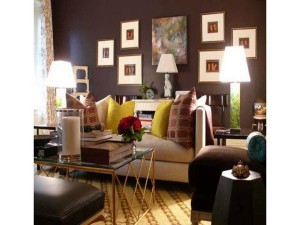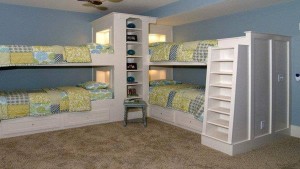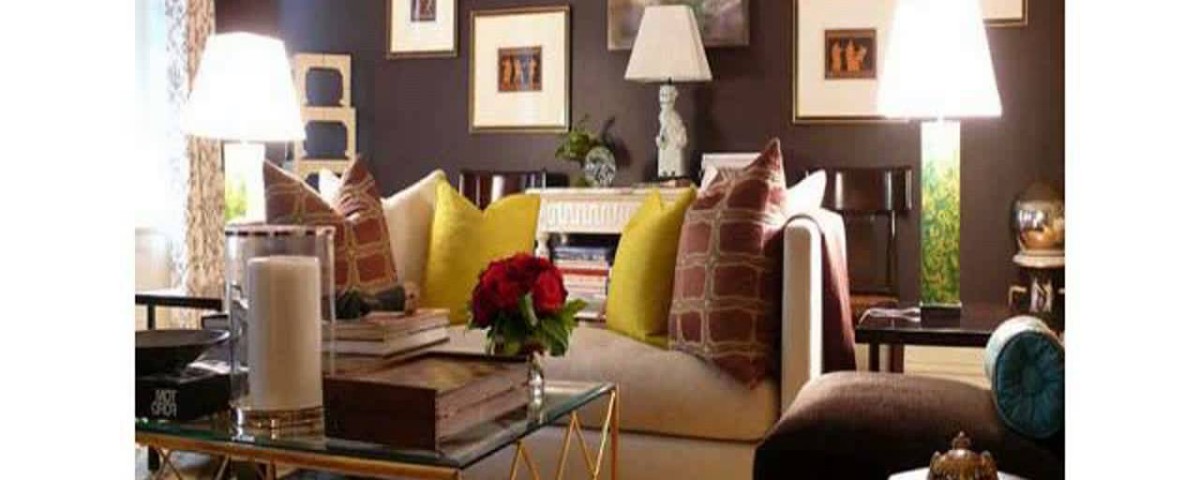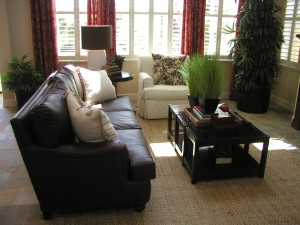 Your home is a busy place. Even when everyone is sleeping, it works hard to keep you safe and secure. This continuous use means that it can become to look worn and jaded. Your family needs change too, as they grow and develop. It is amazing how the home seems to morph and develop, but still keeps you cocooned and safe.
Your home is a busy place. Even when everyone is sleeping, it works hard to keep you safe and secure. This continuous use means that it can become to look worn and jaded. Your family needs change too, as they grow and develop. It is amazing how the home seems to morph and develop, but still keeps you cocooned and safe.
But, do you ever look at your home and wonder how you can use it better? With some small changes here and there, it could become an even better place to live. Updating your home, giving it a modern tweak on it looks inside and out maybe something you would love to do – but stop short because you think – or you know! – that it is a big job and you have no idea where to start or how.
In this article, we offer five tried and tested steps to getting a modern twist on your home without necessarily taking out a second mortgage, moving home or engaging in disruptive, expensive work. Making changes starts with small steps, one room at a time.
Step 1 – De-clutter
 De-cluttering is a time-consuming but cathartic process. You will come across things long forgotten, enjoy some of the memories that they bring flooding back but also sad and anxious about other memories they recall.
De-cluttering is a time-consuming but cathartic process. You will come across things long forgotten, enjoy some of the memories that they bring flooding back but also sad and anxious about other memories they recall.
De-cluttering is no one’s favourite job because it can take so long, as well as feel like an enormous task. But, if you want to make changes, whether it’s decorating a room or making big, structural changes, you need to begin with the process of decluttering.
It is a job that once started, can overwhelm you. When it comes to de-cluttering, there are a few tips that can help you de-cluttering more effective:
- Don’t start BIG – if you decide to de-clutter a whole room in one go, you may find that a few hours in to the task, you run out of steam. Start small: de-clutter the items in a cupboard etc. Deciding to declutter the whole house will only mean you run out of energy and determination sooner rather than later.
- Don’t forget you need to remove and recycle – de-cluttering can be a cathartic process but only if you see it through from start to end. You may be left with a de-cluttered lounge or hallway but, if the stuff is piled up in another room ready to be recycled etc. – and stays there for months – you have only completed half of the task.
- DO set aside plenty of time – you might think it’ll take half an hour to de-clutter the sideboard but it can take three times as long. Set aside plenty of time; even half an hour is better than not doing anything.
- DO have an idea of what you want to keep – there is no hard and fast rule about what to keep and what not to keep but if you haven’t used it in the last six months or more, then consider recycling, upcycling or donating.
Step 2 – Organise storage
 De-cluttering your home is a great process and once you start to come to the end of it in a room, you can start to really see what space you have to work with.
De-cluttering your home is a great process and once you start to come to the end of it in a room, you can start to really see what space you have to work with.
However, there is a common, often forgotten issue when you have sorted through everything: storage. Once you know what you have and what you want to keep, you need to look at effective storage options.
Storage is not just about buying plastic boxes and hiding them away in cupboard; it is about prioritising access and using the space you have in the most effective and efficient way possible; using storage units that work in your space..
Prioritising and ordering items can be a useful way of ensuring that you can find what you want when you need it:
- Eye level – keep things at eye level that are the most important things and ones that you will access on a frequent basis. This is especially true in wardrobe and cupboard space. Finding things quickly and easily usually depends on your eye being able to spot it amongst a sea of things.
- Below the knee – the bunch of things that you will want to access from time to time is given storage space ‘below the knee’. This could be in cupboards or the lower portion of a wardrobe. There may be more effort involved in finding something but if you order your things correctly, you won’t need to access them as often.
- Above the head – and finally, anything that you want to keep but will access infrequently should be kept above your head. This means making more of an effort to access – like climbing a small step ladder. Storing things like winter blankets etc. in the space above your head in the top portion of a wardrobe is a prime example of this.
One way of updating to the look of your home is to use parts of it that are hitherto ‘wasted’. Small nooks and crannies, under stairs spaces and so on can, with shelving and lighting become great storage spaces. Have a look online for inspiration on how to include bespoke and unique storage solutions in your home.
Step 3 – Snag list
 Now that you have de-cluttered and started to deal with storage solutions, you can now spend some time looking at the space or the room. The objective is to create a snag list of what you want changing, followed by how you will go about doing this.
Now that you have de-cluttered and started to deal with storage solutions, you can now spend some time looking at the space or the room. The objective is to create a snag list of what you want changing, followed by how you will go about doing this.
Consider these questions;
- What do you really use the room or space for? What would you like or need to use the space for?
It may be a dining room but is this what you really need it to be? It might a space that for the next few years, would be better used as a playroom or kid’s hangout. The best use of your home will depend on how you need to use it, so don’t think you have to follow a prescribe list or set of traditional ideas.
- What tasks can you complete yourself? Which do you think needs professional input?
Some changes are structural so before you start knocking walls down or ripping fireplaces out, it is a wise move to have a professional check for any structural changes or modifications that need to be made. You may feel able, willing and skilled with the right tools to take on certain tasks. Many people find it satisfying to be able to take on a project and complete it.
Step 4 – Create a mood board for each room and project
 Updating your whole home is a mammoth task, especially if you decide to take it on all at once; this is why, taking it as a room by room project is a great way of completing it.
Updating your whole home is a mammoth task, especially if you decide to take it on all at once; this is why, taking it as a room by room project is a great way of completing it.
Once you have a snag list, you can set a budget for the updating the room or space, as well as deciding on the final look and uplift you are looking for.
In some cases, it may be as simple as painting and decorating or laying new porcelain tiles in the kitchen but you want it to be stylish and practical. There are many ways of doing this, including creating a mood board.
A mood board is where you gather all the ideas you have about the final look of the room all in one place. Some people spread it out over a poster-sized piece of card but other people keep theirs in folders or a scrap book.
Your mood board will contain important information:
- Measurements and dimensions – measure the floor, as well as height of walls and the windows. These measurements are handy for when ordering curtain, blinds, flooring and so on. If you have these to hand, it makes the whole process a lot less stressful.
- A floor plan of your room – drawing an accurate floor plan, with fireplaces, and any other features can also be a great way of understanding how some things may or may not work in a space.
- Photos – clippings from magazines or from internet sites of colours, patterns and ideas are all kept on your mood board. This way, you can start to visualise how the finished room will look. Many people find visualising the final room difficult; if you are one of these people, a mood board is essential.
- Samples – if you are opting for new furnishings in a space, textures and colours are important. Keeping samples of these in a book is a great way of being able to compare how certain paint or wallpaper could work with them and so on. All too often, in our mind’s eye we may think that the carpet is a perfect match only to find that once laid, it makes the room look smaller or clashes with the décor and so on.
- Inclusive – everyone should have a say in how communal spaces in your home look, and mood boards are a great way of bringing ideas together and how they will work (or not!).
Step 5 – Maintenance of your ‘new’ home
You have worked really hard. You have a de-cluttered home, great storage solutions, a feeling of space and you and your family find that the house is once again, versatile and responsive to your needs.
Keeping it this way is not as tough as you think and this is why;
- Identify your buying ‘patterns or rituals’ – have you noticed how some people’s homes seem full of trinkets without it feeling cluttered? This is because these purchases are considered and thought out ones. This is how you need to be with every purchase you make in the future. Think carefully before every purchase – and never shop when tired – it’s so much harder to resist things.
- Visualise the coming months– you have come across a beautiful, hand blown vase. You must-have it! But, think how it will look in your home in six months’ time. Will it still fit with the décor? Or, if you change the look of that room, will the vase still have a place in it?
- Compulsive buys rarely work out… – everyone has had some kind of impulsive buy. Sometimes they work but more often than not, the item becomes an object that is passed around from room to room, and then put in a cupboard and forgotten about. When it comes to buying something for your home in the future, you need to be confident that it is a well-thought out purchase.
- Regular de-cluttering – staying on top of clutter is important. It doesn’t take long for it to all start to mount up again. Recycling and upcycling are a great way of reusing stuff that you no longer need, or no longer need in its current format. If you do want to recycle items, take advantage of the kerbside collections. Local authorities are now collecting a wider range of items as part of their weekly collections, from clothing to small electrical items. Many local recycling centres also offer collection for larger items and don’t forget that your ‘rubbish’ or unwanted stuff could be just perfect for someone else.
Updating your home takes a little effort and organisation but, get the basics right and you will soon see the fruits of your labour – remember the below and you won’t go far wrong.
- De-cluttering is great but only if you make arrangements for items to be moved/recycled/upcycled and reused.
- As well as budgeting, you also need to plan your time; some aspects of updating your home can take longer than others.
- Mood boards or books are a great way of gathering inspiration and ideas so that you get the final look that you want.
- Not also changes are DIY tasks; structural changes should be OK’d by a builder first or by a structural engineer.
- Get the whole family involved and remember, just because a room has ‘always been used as a dining room etc.’, doesn’t mean it has to stay as one. If you need a play room, then make space for one. It can always be changed back when you no longer need a play space.
- Awkward places make great storage solutions, especially if you use the space available creatively.








